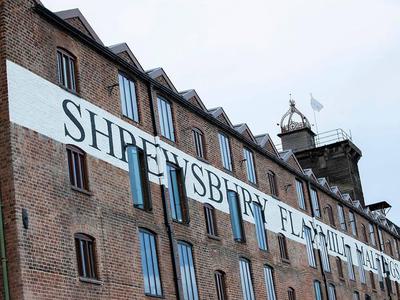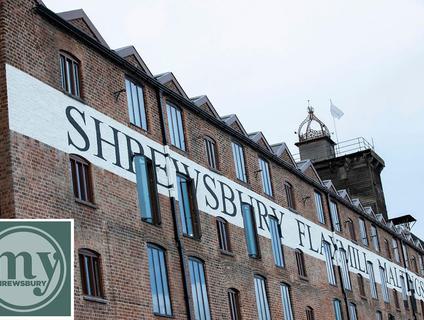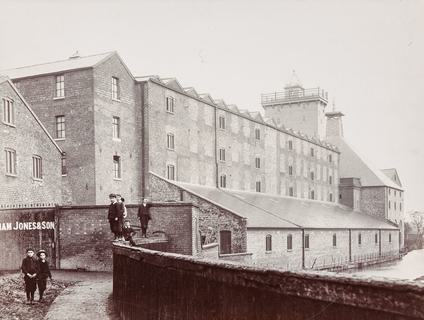- Features
- Shrewsbury's historic Flaxmill comes back to life
Shrewsbury's historic Flaxmill comes back to life


Shrewsbury Flaxmill Maltings is one of the most extraordinary buildings in the world. It was the first to have an iron frame, and is known as the great grandparent of skyscrapers everywhere. It has played a central role in the life of the town and the region for centuries; it was the first place in Shrewsbury to be gas lit, it has been a mill, a maltings, and a barracks during the Second World War.
The flaxmill was built in 1796 by Liverpudlian textile entrepreneur John Marshall and funded by Shrewsbury wool merchants the Benyon brothers – its iron frame, designed by structural engineer Charles Bage, intended to guard against fires. All the ironwork came from Hazeldines Coleham foundry. For 90 years, the steam-powered mill spun linen yarn and thread from flax. It even had its own gasworks. Imagine it in full use, with steam engines at both ends and smoke billowing out of it, all lit up. It is not surprising that, at the time, local residents referred to it as the ‘dragon on the hill’. Child labour was very much in evidence – the old apprentice house where they slept still stands.
In 1897, the flaxmill was converted into Maltings by William Jones of Shrewsbury and operated for a further 90 years, turning barley into malt for brewing, until its closure in 1987.

Following several failed developments, Historic England stepped in and bought the site in 2005. Together with partners, Shropshire Council and the Friends of the Flaxmill Maltings, it set about securing the site’s long term survival.
Firstly, it created a visitor centre and office on site, and demolished the old grain silos. It then embarked on a major project to restore the Main Mill and Kiln – enabled by £20.7 million from the National Lottery’s Heritage Fund. This involved repairing the walls, floors and roof, and unblocking the windows. The Main Mill also needed a new roof, complete with original Welsh Penrhyn Slate. Around 30,000 new, unusually sized, handmade bricks, were needed to complete the repairs – made at Northcot brickworks in Gloucestershire.
Some of the original cast iron components in the building were designed to carry only 2.5 times the load. A new steel grillage at first floor and six new columns at ground floor have had to be installed to provide alternative load paths, to conform to modern safety standards. Engineers have also designed a special, high-strength screed, anchored to the masonry arches from which the beams are suspended and installed 204 metal tie rods to provide additional loading capacity.
It was a great leap forwards when the scaffolding came down in October 2018 –revealing the walls of the huge Main Mill for the first time in 10 years.
The original large windows, once allowed light to flood the factory floors, providing maximum ventilation and lighting for the workers’ gruelling 16-hour shifts. These were bricked up, leaving smaller square openings to control the germination of barley – but have now been opened up once again.
The now iconic iron crown topping the timber hoist tower of 1897 was apparently ordered from a catalogue to mark Queen Victoria’s Diamond Jubilee! The crowning glory of the flaxmill is decaying fast, however, and Historic England has launched a public fundraising campaign to raise £26,000 in order to restore it.
The second phase, due to complete in 2021 will see the interior converted, ready for a new lease of life. The ground floor of the Mill will house an innovative public museum space and café where people can learn about the fascinating journey of Shrewsbury Flaxmill Maltings, and about the people who worked there.
The upper four floors of the Main Mill will be converted for local businesses and enterprises to occupy. As the second phase progresses, the Main Mill will be advertised to potential tenants who would like to become part of the story of this stunning building.
The restoration will not reinstate the canal which allowed barges and tugs to call at the mill – nor the railway sidings at the back (although there are plans to mark the line of the canal through landscaping) and the apprentice house and dye house still need significant funding to secure their feature.
But the mill is entering an exciting third age and is clearly set to reinvigorate this tired corner of town, becoming a major visitor attraction for Shrewsbury.

Can you help the Friends of the Flaxmill Maltings uncover pictures of the building when it was still a flaxmill? Do you have any artefacts belonging to this era? They would love to hear from you. Contact info@flaxmill-maltings.co.uk
The visitor centre at Spring Gardens, Shrewsbury, is open April - October on Friday, Saturday and Sunday from 10am-4pm and November to March on Saturdays only (10am-4pm). Groups may also pre-book tours – contact info@flaxmill-maltings.co.uk
My Shrewsbury Magazine
My Shrewsbury is our town's dedicated, bi-monthly local magazine, packed with quirky features about personalities, places and events and showcasing the very best local writers, artists and photographers. It has a bold aim to be the best hyper-local magazine in the country and always loves to hear from readers!
